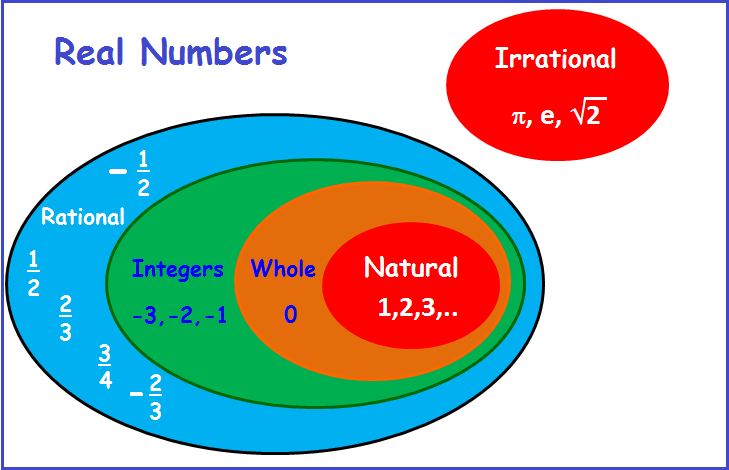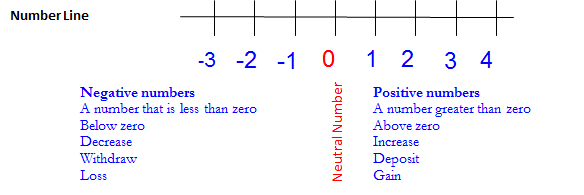Natural numbers are the counting numbers {1, 2, 3, …} (the non-negative integers)
A whole number is a number that is not a fraction or a decimal. The whole numbers include all the natural numbers and Zero.
Integers are the natural numbers and their negatives {… −3, −2, −1, 0, 1, 2, 3, …}.
A positive number is a number that is bigger than zero. In business positive numbers were used to represent assets.
A negative number is a real number that is less than zero. Such numbers are often used to represent a value that is a deficit.
Negative numbers have many applications in business and personal finance. Example: How can we have less than nothing? When we’re in debt.
Two numbers that have the same magnitude but are opposite in signs are called Opposite Numbers. Example: +5 and -5 are Opposite Numbers
The absolute value (or modulus) |a| of an integer a is the numerical value of a without regard to its sign. Example: |-5| = 5
Now we will consider the four basic operations with whole numbers: addition, subtraction, multiplication, and division.
Place value
The real numbers include all the rational numbers (including integers and the fractions) and all the irrational numbers.
The Irrational Numbers are real numbers that cannot be written as a simple fraction.

Extending vocabulary using the Frayer Model.
Create a graphic organizer (Frayer Model) for the following vocabulary words: integer number, absolute value, opposite, rational number.
(keep a copy in your notebook)
Your ability to understand math problems can be improved with math journal writing. Be sure to include all the relevant information. Remember- Show your work and answers in Your Math Journal !


